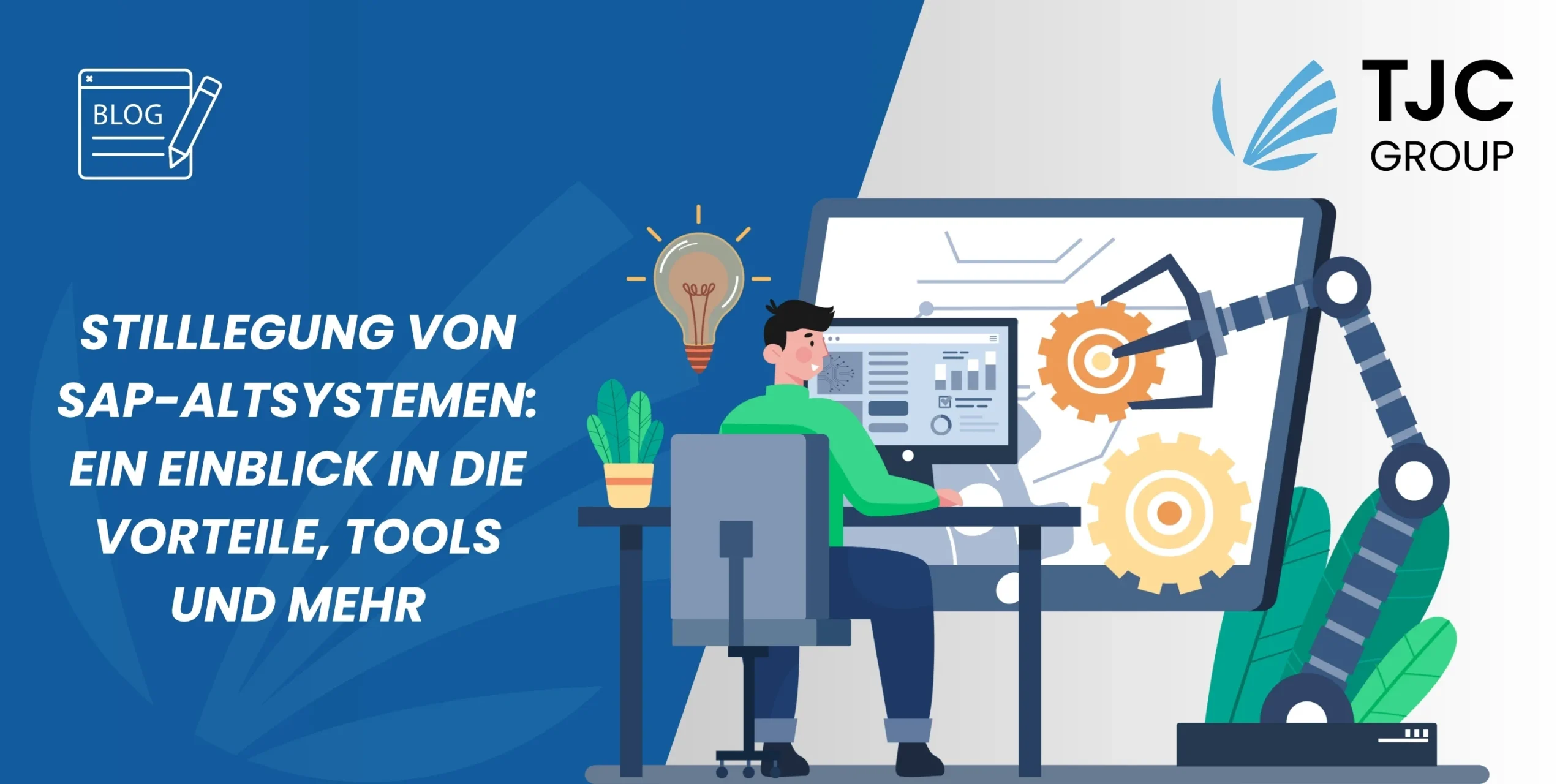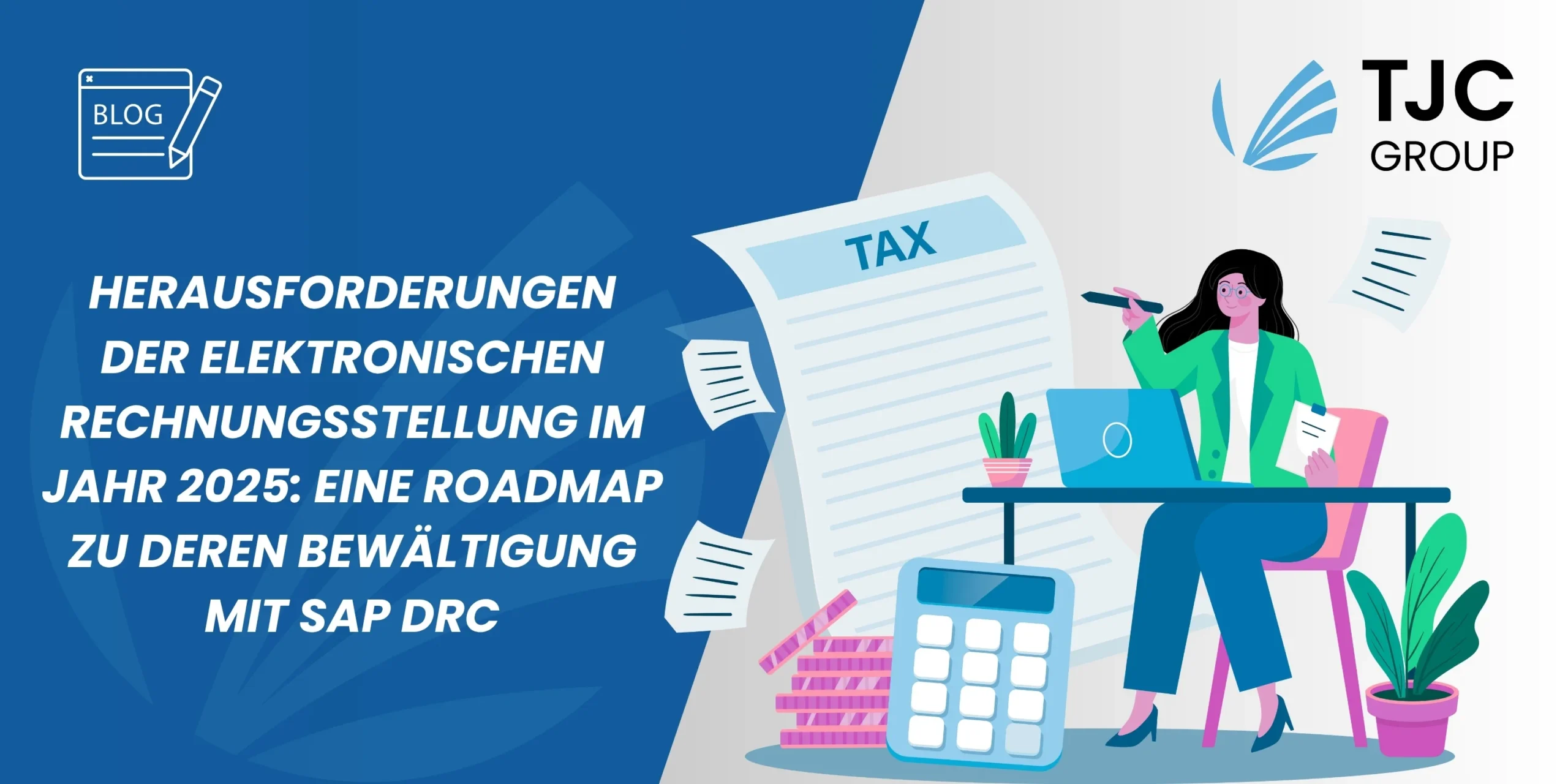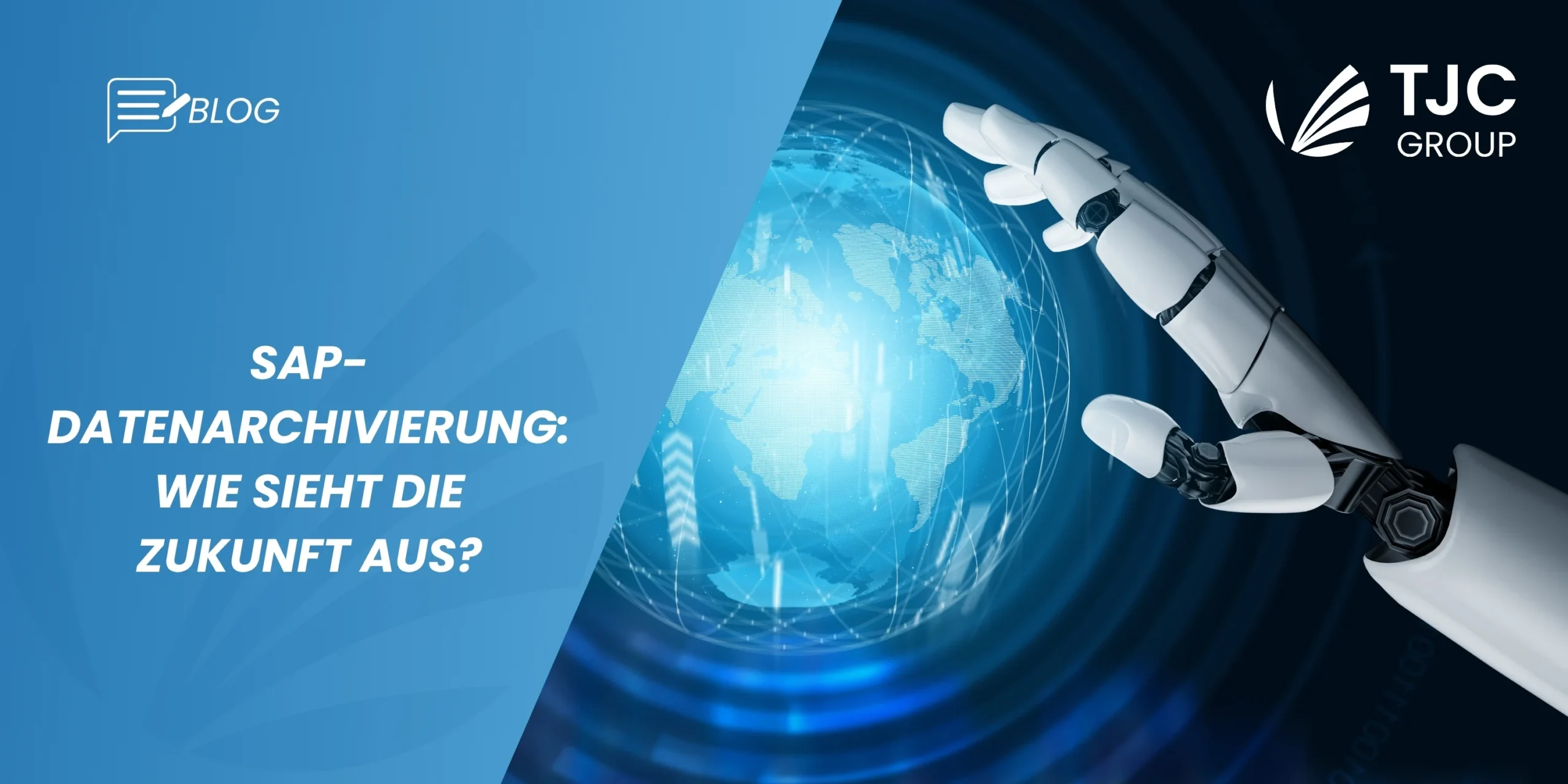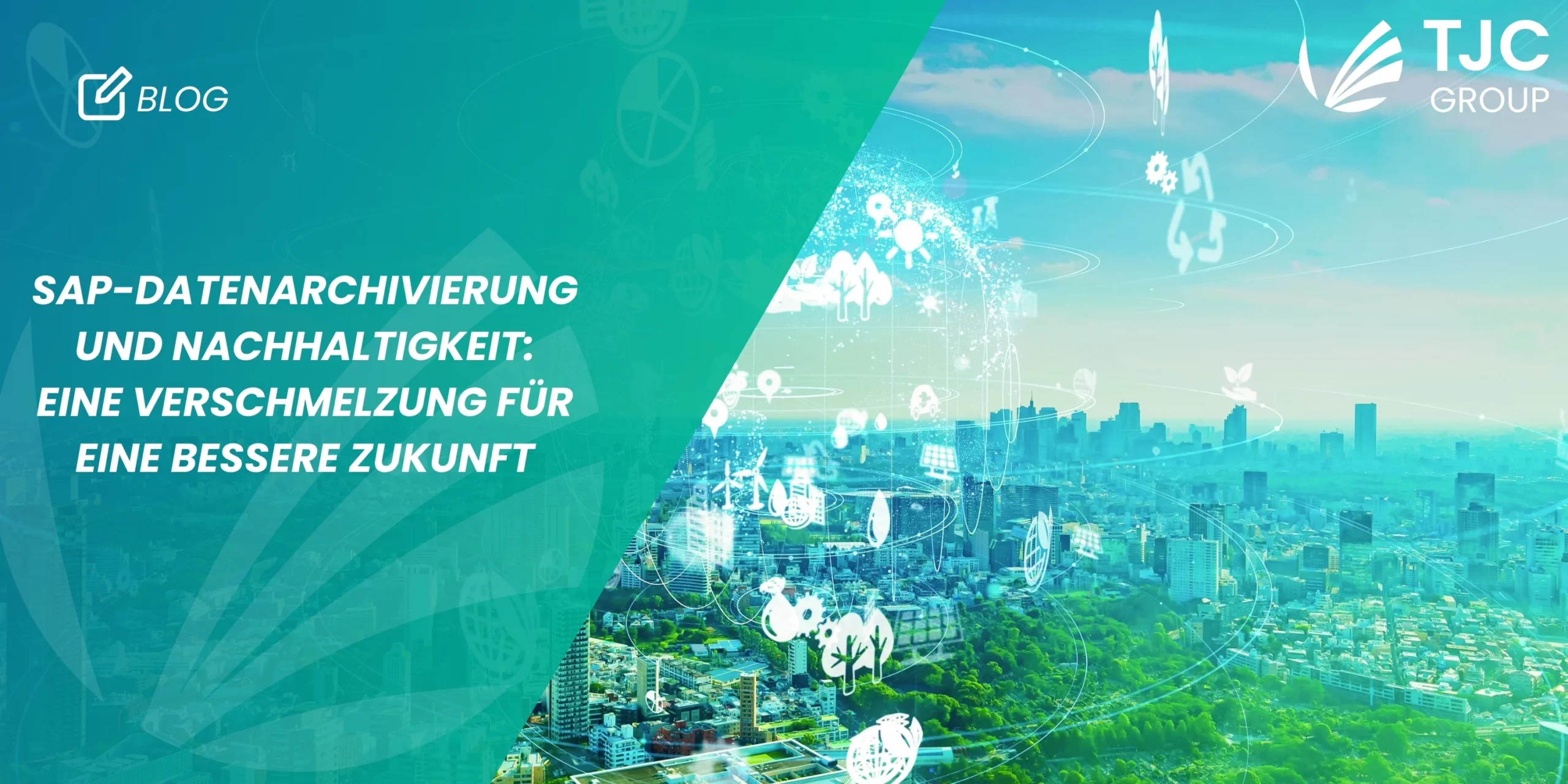
Laut Statista ist die Zahl der Nutzer von SAP S/4HANA deutlich gestiegen, von nur 370 Nutzern im Jahr 2015 auf über 20.000 im zweiten Quartal 2022. Mit S/4HANA hat SAP der Welt ein verbessertes ERP-System vorgestellt, das mehrfach eingesetzt werden kann und mehr. Hier ist ein Blog über die 5 wichtigsten Vorteile von SAP S/4HANA, die Sie für Ihr Unternehmen nutzen können. Lesen Sie weiter!
Inhaltsübersicht
Einführung
Enterprise Resource Planning, kurz ERP, ist ein Softwaresystem, das Unternehmen dabei hilft, ihren gesamten Betrieb zu führen – von der Unterstützung der Automatisierung und der Prozesse in den Bereichen Finanzen und Personalwesen bis hin zu Fertigung, Lieferkettendienstleistungen, Beschaffung und mehr. Diese Software zur Ressourcenplanung hat sich im Laufe der Jahre weiterentwickelt. Mit der Modernisierung und dem Fortschritt in der Welt haben sich auch die ERP-Systeme weiterentwickelt, sei es in Bezug auf ihre Funktionen oder ihren Einsatz.
So gibt es bei modernen ERP-Systemen drei verschiedene Arten der Bereitstellung – in einer öffentlichen oder privaten Cloud, vor Ort oder in einem hybriden Szenario in einer kombinierten Umgebung. Eines der beliebtesten ERP-Systeme in der Branche ist heute SAP S/4HANA, das alle Bereitstellungsoptionen bietet. Dieses neue ERP-System von SAP bietet eine Fülle von Vorteilen und verbesserten Funktionen, von denen Unternehmen in besonderem Maße profitieren.
SAP S/4HANA: Ihr ERP-System der ersten Wahl
Das 2015 erstmals veröffentlichte System SAP S/4HANA ist die neueste Version der Enterprise Resource Planning Suite von SAP. Es gilt als eine der bedeutendsten Änderungen an den Kernangeboten von SAP seit der Einführung des R/3-Systems im Jahr 1992. Ein interessanter Fakt – S/4HANA wurde ursprünglich als Finanzlösung der nächsten Generation im Jahr 2014 unter dem Namen SAP Simple Finance veröffentlicht. Neun Monate später kündigte SAP jedoch die Erweiterung des Kerns zu einem vollwertigen ERP-System an.
Im Jahr 2016 hat SAP die Logistikfunktionalität in S/4HANA in vier Schlüsselbereichen eingeführt.
- Beschaffung und Einkauf
- Herstellung
- Lieferkette
- Vermögensverwaltung
Darüber hinaus wurden SAP ERP-Erweiterungen, wie z.B. die erweiterte Lagerverwaltung (EWM) und die Produktionsplanung/Detailplanung (PP-DS), direkt in das SAP S/4HANA-System eingebettet. Die Abbildung unten zeigt eine bildliche Beschreibung davon –
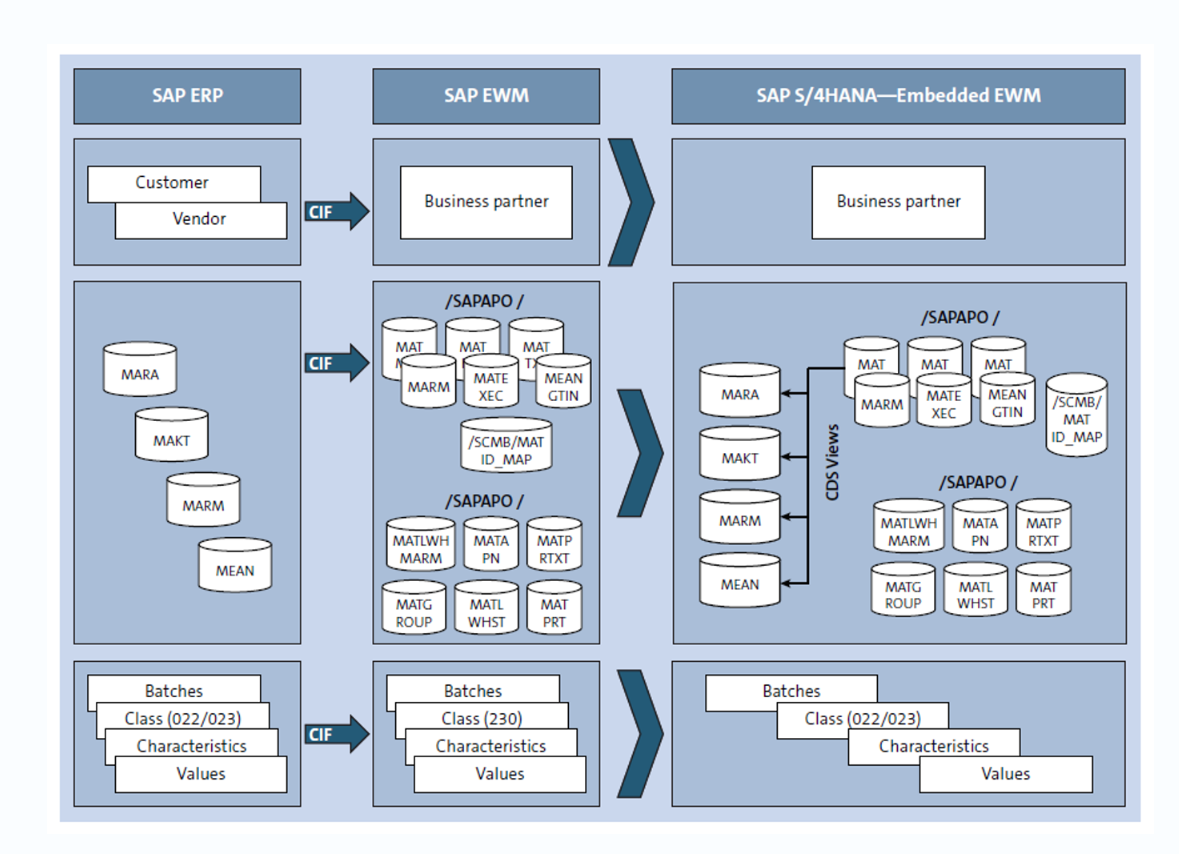
Darüber hinaus fügte SAP 2017 der S/4HANA-Suite Funktionen für maschinelles Lernen hinzu, um Unternehmen dabei zu helfen, den Abgleich von Waren- und Rechnungseingängen zu vereinfachen und die Zuordnung von Rechnungen zu automatisieren. Im September 2017 wurde auch die Funktionalität für das Transportmanagement in dieses ERP-System integriert.
SAP S/4HANA hat im Jahr 2018 die meisten Upgrades erfahren – SAP fügte Funktionen für die vorausschauende Buchhaltung hinzu, und in den darauffolgenden Versionen wurden weitere intelligente Technologie-Upgrades in den Bereichen künstliche Intelligenz, Blockchain und das Internet der Dinge eingeführt. Bis 2021 hat SAP mehrere branchenspezifische Angebote für S/4HANA in den Bereichen Energie und natürliche Ressourcen, Finanzdienstleistungen, Dienstleistungen und Konsumgüterindustrie, diskrete Industrien und öffentlicher Dienst veröffentlicht.
ERPs werden als das zentrale Nervensystem eines Unternehmens bezeichnet – sie helfen bei der Rationalisierung komplexer Prozesse, stellen sicher, dass die Daten genau und zugänglich sind, und vieles mehr. SAP S/4HANA verfügt über Funktionen, mit denen Unternehmen ihre Abläufe effizient verwalten können. Die Integration in verschiedene Bereiche wie Personalwesen, Finanzen, Lieferkette usw. ermöglicht es Unternehmen, eine einheitliche 360-Grad-Sicht auf ihre Abläufe zu erhalten.
Nutzen Sie die Vorteile von SAP S/4HANA
Das SAP S/4HANA-System bietet den Anwendern eine Vielzahl von Vorteilen. Hier sind einige der wichtigsten Vorteile, die Unternehmen für sich nutzen können.
- Verbesserte Effizienz der Organisation
S/4HANA by SAP kann Aufgaben wie Dateneingabe, Rechnungsstellung mit den SAP Fiori Apps usw. automatisieren und so den manuellen Aufwand eliminieren. Es ermöglicht Anwendern die Erstellung und Anpassung von Apps an die Anforderungen des Unternehmens und die Nutzung peripherer Technologien wie SAP Intelligent RPA für weitere Automatisierungsprozesse. Insgesamt trägt das S/4HANA ERP-System zur Verbesserung der Effizienz bei, so dass sich die Mitarbeiter auf wichtigere Aufgaben konzentrieren können.
- Vereinfachtes ERP-System
Ein wesentliches Merkmal dieses neueren ERP-Systems ist, dass die Verwaltung und Administration der IT-Landschaft erheblich vereinfacht werden kann. In der Tat hat SAP die Einfachheit als einen der Hauptvorteile von S/4HANA angeführt. SAP S/4HANA zentralisiert die Hardware- und Netzwerkressourcen und dient gleichzeitig als digitaler Kern für die Vereinfachung verschiedener Geschäftsprozesse durch die Nutzung der Leistung der HANA In-Memory-Datenbank.
- Ein kosteneffektives System
Die Einführung von SAP S/4HANAkann die Gesamtbetriebskosten auf lange Sicht erheblich senken. Die Einführung dieses Systems ist ein kluger Schachzug, da es alle analytischen und transaktionalen Fähigkeiten mehrerer Systeme an einem Ort vereint. Durch den Einsatz von S/4HANA können Unternehmen die Integrationskosten senken, da alle Daten in einer einzigen Datenbank gespeichert werden und die Komplexität der Aktualisierung und Integration mehrerer Systeme reduziert wird. Darüber hinaus können Unternehmen durch die geringeren Hardwareanforderungen auch bei den Hardware- und Wartungskosten sparen. Und schließlich verfügt dieses neue ERP über eine vereinfachte Benutzeroberfläche, die den Schulungsaufwand und die Supportkosten insgesamt reduziert.
- Die Fähigkeit, auf den Standard zurückzugreifen und gleichzeitig die Kontrolle zu behalten
SAP S/4HANA ermöglicht es Unternehmen, auf Standardeinstellungen zurückzugreifen und die Kontrolle über ihre Systeme wiederzuerlangen. Im Mittelpunkt dieses Prozesses steht die spaltenbasierte In-Memory-Architektur von S/4HANA, die eine effiziente und flexible Anpassung, Überarbeitung und Rücksetzung der Systemeinstellungen ermöglicht. Darüber hinaus verfügt das neue ERP über zahlreiche leistungsstarke Audit-, Überwachungs- und Compliance-Funktionen, die das System weiter kontrollieren. Von einer leistungsstarken Befehlszeilenschnittstelle und Skripting-Funktionen bis hin zu einer umfassenden Autorisierungs- und Zugriffskontrolle hilft S/4HANA Unternehmen, die Kontrolle über ihre Systeme effektiv wiederzuerlangen.
Neue Funktionen von SAP S/4HANA
- Ein neues Konzept: Business Partner-Ansatz
Die Unterscheidung zwischen Kunden und Lieferanten ist ein Relikt der Vergangenheit. In S4HANA ist ein “Geschäftspartner”das führende Objekt und der zentrale Einstiegspunkt für die Pflege derStammdatenvon Partnern, Kunden undLieferanten(in älteren SAP-Versionen früher als Lieferant bezeichnet).Der Geschäftspartner ist nun in der Lage, die Stammdaten für Geschäftspartner, Kunden und Lieferanten zentral zu verwalten und bringt mehrere Vorteile mit sich:
-Es ermöglicht die Verwaltung mehrerer Adressen und die Verwendung entsprechender Adressen.
-Eine juristische Person kann nur von einem Geschäftspartner repräsentiert werden.
-Einem Geschäftspartner können mehrere Rollen zugewiesen/zugeordnet werden (während bei klassischen Transaktionen eine Kontengruppe nur einem Kunden zugewiesen wird).
-Allgemeine Daten sind für verschiedene Geschäftspartnerrollen verfügbar, und für jede Rolle werden spezifische Daten gespeichert.
-Es ermöglicht außerdem eine maximale gemeinsame Nutzung und Wiederverwendung von Daten, was zu einer einfacheren und effizienteren Datenkonsolidierung führt.
Kunden-Lieferanten-Integration (CVI) im Geschäftspartner-Ansatz
In einem traditionellen ERP-System stoßen Sie häufig auf redundante Objektmodelle. In diesem Prozess werden jedoch der Lieferantenstamm und der Kundenstamm verwendet; der obligatorische Zielansatz in SAP S/4HANA ist der Geschäftspartneransatz. Daher ist die Kunden-Lieferanten-Integration ein Vorteil bei der Umstellung auf S/4HANA.
Business Partner Approach ist insgesamt in der Lage, Stammdaten für Kunden, Partner und Lieferanten zu verwalten und bietet somit einen zentralen Einstiegspunkt für die Erstellung, Bearbeitung und Anzeige von Stammdaten.
- Eingebettet in SAP Fiori 3.0
Das ERP-System SAP S/4HANA wird standardmäßig mit der Funktion SAP Fiori 2.0 ausgeliefert, die ein modernes Design und ein innovatives und tadelloses Benutzererlebnis bietet. Mit SAP Fiori können Benutzer einfach auf Arbeitslisten, Übersichtsseiten, Berichte usw. zugreifen. Mit SAP Fiori 2.0 ist es möglich, eine Kachel zu haben, die einer Aufgabe und einem bestimmten Benutzer gewidmet ist. Mit der Version SAP S/4HANA 2021 (on-premises) wurde jedoch ein verbessertes SAP Fiori Launchpad für das Web eingeführt, das als SAP Fiori 3.0 bekannt ist.SAP Fiori 3.0 ist das neue, produktübergreifende Zielsystem von SAP, um die Intelligent Suite ganzheitlich zu unterstützen, die auf jedem Gerät läuft. Für das Upgrade wurde Fiori 2.0 als Ausgangspunkt genommen und Aspekte festgelegt, die zur Unterstützung der Verbesserungen hinzugefügt werden sollten.
Das UI-Design der SAP Fiori-Apps ist äußerst intuitiv, reaktionsschnell und einfach, so dass die Benutzer unabhängig von Gerät und Einsatzort problemlos auf die erforderlichen Details zugreifen können. Dadurch wird auch das gesamte Benutzererlebnis des S/4HANA ERP-Systems nahtlos. Darüber hinaus werden natürliche Sprachinteraktion und maschinelle Intelligenz in Zukunft ein wichtiger Bestandteil des Fiori-Erlebnisses sein.
Design und Technologie: UI5 als Wegbereiter für SAP Fiori 3
UI5 ist die Technologie der Wahl für unternehmenstaugliche SAP Fiori-Apps. Das Upgrade wurde mit sofort einsatzbereiten technischen Assets ausgestattet, die Kunden und Partner in die Lage versetzen, das Fiori 3-Designsystem zu aktivieren. Heute bietet UI5 das SAP Fiori 3 Design durch Assets, die ab UI5 1.65 verfügbar sind: Theming, Cards & Layouts und Shell Bar.
- Flexible Arbeitsabläufe
Ein neues Konzept in der SAP S/4HANA-Landschaft, der flexible Workflow, soll die Workflow-Konfiguration vereinfachen. Dies ist besonders für Workflows in den Bereichen Beschaffung und Einkauf von Bedeutung. Die Dokumente in Beschaffung und Einkauf, wie z.B. Bestellanforderung, Bestellung, Angebotsanfrage usw., müssen normalerweise einen langwierigen Genehmigungsprozess durchlaufen. Mit flexiblen Workflows wird dieser Prozess jedoch viel einfacher und effizienter.
Der flexible Workflow basiert auf einer Reihe von vordefinierten Workflow-Szenarien und Aufgaben und bietet Benutzern die Möglichkeit, einen bedingungsbasierten Workflow für verschiedene Prozesse zu definieren, insbesondere im Bereich Beschaffung und Einkauf. Dabei können die Benutzer einen ein- oder mehrstufigen Genehmigungsprozess definieren – die entsprechenden Arbeiten sind in der My Inbox Fiori App für die Genehmigenden verfügbar. Aber auch für Einkaufsdokumente stehen Manage Workflows Fiori Apps zur Verfügung. Mit diesen Apps können Geschäftsprozessspezialisten Workflows auf der Grundlage von Geschäftsanforderungen einrichten.
Im Folgenden finden Sie die sieben wichtigsten Schritte, die bei der Konfiguration flexibler Arbeitsabläufe zu beachten sind.
– Automatische Anpassung des Arbeitsablaufs
– Aktivieren Sie flexible Workflow-Szenarien
-Definieren Sie Schrittnamen und Entscheidungsoptionen, die im Bereich “Mein Posteingang” der Fiori-App verwendet werden sollen.
-Visualisierungs-Metadaten für Mein Posteingang festlegen
-Ereignisart-Kopplungen für SAP Business Workflow deaktivieren
-Aufgaben verallgemeinern und ereignisbezogene Verknüpfungen für flexible Arbeitsabläufe aktivieren
-Registrieren Sie Gateway-Dienste für Value Helps
Obwohl sowohl das Freigabeverfahren als auch der SAP Business Workflow in S/4HANA weiterhin zur Verfügung stehen, empfiehlt es sich, die neue Flexible Workflow-Funktionalität in S/4HANA zu nutzen.
- Reaktionsfähige Anpassung an mehrere Geräte
Da die Upgrades von S/4HANA in SAP Fiori 3 eingebettet sind, können die Benutzer eine Fülle von Vorteilen nutzen – einer davon ist das responsive Design. Einer der überzeugendsten Faktoren von Fiori ist, dass die Anwendungen nur einmal entwickelt, konfiguriert und gepflegt werden müssen, damit die Änderungen auf allen Geräten aktiv sind. Dadurch erhalten die Benutzer ein einheitliches Erlebnis, unabhängig vom verwendeten Gerät. Mit Hilfe von SAP UI5 wird das responsive Design für das S/4HANA-System einfacher, da es eine Reihe von UI5-Steuerelementen zur automatischen Anpassung an verschiedene Formfaktoren, Interaktionsstile usw. bietet.
Darüber hinaus ermöglicht SAP UI5 die Größenanpassung der Steuerelemente, um sie an die Art der Interaktion anzupassen. Ein großer Vorteil des responsiven Designs ist, dass sich die Anwendungen ohne zusätzlichen Programmier- und Wartungsaufwand an die Bildschirmgröße anpassen können.
Reaktionsfähiges Gitter
Das responsive Design wird durch ein responsives Raster unterstützt, das die Positionierung von UI-Elementen in einem 12-spaltigen Flow-Layout erleichtert. Benutzer können das Raster so konfigurieren, dass je nach verfügbarer Bildschirmgröße eine variable Anzahl von Spalten angezeigt wird. So lassen sich flexible Layouts und Zeilenumbrüche für große, mittlere und kleine Bildschirme wie Tablets, Handys und Desktops erzielen.
Adaptives Design
In manchen Fällen ist ein responsiver Designansatz nicht produktiv oder anwendbar. Zum Beispiel würden Benutzer es vorziehen, große Datenmengen auf ihren Desktops einzugeben, während sie auf ihren mobilen Geräten oder Tablets vielleicht nur eine kleine Teilmenge von Daten anzeigen oder eingeben möchten. Entwerfen Sie in diesen Fällen für verschiedene Geräte und passen Sie die Komplexität der Anwendungsfälle an die jeweiligen Geräte an. Dies wird als adaptives Design bezeichnet – ein Ansatz, bei dem App-Entwickler manuell spezifische Designs für die verschiedenen Formfaktoren definieren müssen. Obwohl es etwas mehr Aufwand bedeutet, ermöglicht adaptives Design eine gezieltere Unterstützung gerätespezifischer Anwendungsfälle.
Wie unterscheidet sich S/4HANA von SAP ECC?
Die Datenbank: S/4HANA läuft nur auf dem HANA-Speicher, während SAP ECC auf vielen Datenbanken laufen kann, darunter DB2, Oracle, SQL Server und SAP MaxDB.
Bereitstellungsoptionen:Es gibtmehrere Bereitstellungsoptionen für S/4HANA: vor Ort, in einer öffentlichen Cloud, in einer öffentlichen Cloud, in einer gehosteten Cloud und in einer hybriden Umgebung, die sowohl vor Ort als auch in der Cloud eingesetzt wird.
Fortschrittliche Funktionen, die neue Technologien einbeziehen:S/4HANAist so konzipiert, dass fortschrittliche Technologien wie maschinelles Lernen, eingebettete Analysen, robotergestützte Prozessautomatisierung, künstliche Intelligenz und der digitale Assistent SAP CoPilot genutzt werden können.
Benutzerfreundlichkeit:SAPS/4HANA verwendet standardmäßig SAP Fiori, während SAP ECC auf SAP GUI basiert, obwohl es eine begrenzte Anzahl von Fiori-Apps hat. SAP Fiori ist ein Designsystem, das es ermöglicht, Geschäftsanwendungen mit einem Benutzererlebnis auf Verbraucherniveau zu erstellen. Insgesamt bietet SAP Fiori eine viel bessere Benutzeroberfläche, mehr Flexibilität und eine schnellere Entwicklung.
Bereiten Sie Ihre Daten für die S/4HANA-Migration vor
Eine von der UK and Ireland SAP User Group (UKISUG) im Jahr 2022 durchgeführte Umfrage ergab, dass 61% der befragten Unternehmen Herausforderungen im Bereich des Datenmanagements hatten oder erwarteten, die die Automatisierung ihrer Geschäftsprozesse beim Übergang von SAP ECC zu SAP S/4HANA behindern würden. Das Haupthindernis bei diesen Migrationen ist der allgemeine Mangel an Bereitschaft bei der Datenverwaltung.
Für SAP-Anwender ist das Problem der Datenverwaltung von entscheidender Bedeutung, da es sich direkt auf die Leistung der SAP-Systeme auswirkt und folglich zu einem Anstieg der Gesamtbetriebskosten (TCO) führt.
Es gibt verschiedene Strategien zur Bewältigung des Datenbankwachstums, wobei die von SAP empfohlene SAP-Datenarchivierung die effizienteste ist. Die SAP-Datenarchivierung ist eine wichtige und effektive Strategie, um das kontinuierliche Datenwachstum zu bewältigen, die Sicherheit zu erhöhen, die Compliance zu verbessern und die Kosten zu kontrollieren. Bei der Datenarchivierung werden die archivierten Daten außerhalb der SAP-Datenbank gespeichert, stehen aber weiterhin für die Anzeige über die üblichen Transaktionen zur Verfügung.
Ohne laufende Datenarchivierung verdoppelt sich das Datenvolumen in der Regel innerhalb weniger Jahre – das hängt von der Branche und der Art des Unternehmens ab. Dieser Artikel bietet einen interessanten Vergleich zwischen einem Unternehmen, das keine Maßnahmen zur Zähmung seines Datenvolumens ergreift, und einem anderen, das schon früh mit der Planung einer SAP-Datenarchivierungsreise in Richtung S4HANA begonnen hat: https://www.tjc-group.com/blogs/data-volume-management-what-is-the-effect-of-doing-nothing/
Kurz gesagt, die Dimensionierung der HANA-Datenbank ist ein entscheidender Aspekt der S/4HANA-Implementierung. Find ways to control database growth and strategies to optimize SAP landscape costs. Dieser Artikel befasst sich mit den Besonderheiten des HANA-Speichers und schlägt mehrere Methoden vor, um das Datenbankwachstum über die Datenarchivierung hinaus zu kontrollieren: https: //www.tjc-group.com/blogs/hana-database-how-to-keep-data-growth-under-control-sap-data-management/
Abschließende Gedanken: Ist es ein Segen?
Die Antwort darauf wäre ein absolutes Ja!
SAP S/4HANA bietet Flexibilität und Skalierbarkeit für Unternehmen jeder Größe. Die schlanke Architektur dieses ERP-Systems ermöglicht es Unternehmen, ihre Daten über mehrere Plattformen hinweg effizient zu integrieren und zu verbessern. Darüber hinaus hilft S/4HANA Unternehmen, flexibler zu werden und auf sich ändernde Kundenbedürfnisse zu reagieren.
Darüber hinaus können Unternehmen bestehende Legacy-Systeme und Cloud-basierte Software mit neuen Technologien kombinieren, um aussagekräftige Kundeneinblicke und tiefere Analysen zu erhalten, indem sie prädiktive Technologien und KI-basierte Funktionen nutzen. S/4HANA vereinfacht auch das Projekt- und Portfoliomanagement und hilft Unternehmen, ihre Investitionen in Echtzeit zu monetarisieren und gleichzeitig ihren Kunden einen höheren Mehrwert zu bieten.
Wie kann die TJC Group helfen?
Mit mehr als 25 Jahren Erfahrung helfen wir Unternehmen bei all ihren Anforderungen an das Datenmanagement. Von der Datenarchivierung bis zur Stilllegung hilft die TJC Group Unternehmen, ihre Daten für die SAP S/4HANA-Migration kostengünstiger und zeitsparender vorzubereiten, indem veraltete Daten entfernt werden.
- Verringern Sie die Größe der SAP-Datenbank, um HANA-Speicherkosten zu sparen.
- Importieren Sie nur relevante Daten, indem Sie veraltete Daten, wie z.B. alte Buchungskreise, entfernen.
- Wir helfen Ihnen bei der Kunden-/Lieferantenintegration durch die Archivierung veralteter Kunden und Lieferanten.
- Verwalten Sie persönliche Daten. Setzen Sie die Einhaltung der Datenschutzgesetze durch. Wir sorgen dafür, dass die Daten in der SAP-Datenbank den gesetzlichen Anforderungen an die Datenaufbewahrung und Datenvernichtung entsprechen.
- Wenn Sie sich für den Ansatz der selektiven Datenübernahme entschieden haben, können wir das SAP Business Transformation Centre für Sie einrichten.
- Sobald Sie auf S/4HANA umgestiegen sind, stellen Sie sicher, dass Ihre SAP-Altsysteme sicher außer Betrieb genommen werden und alle Informationen für Steuer- und Prüfungszwecke oder einfach für geschäftliche Zwecke verfügbar bleiben.
- Stellen Sie nach der S/HANA-Migration sicher, dass die fortlaufende Archivierung und Datenlöschung durch Automatisierung aufrechterhalten wird. Solche manuellen Aufgaben hören nie auf, es ist wie ein Hamster im Rad. Die Automatisierung mit dem Archiving Sessions Cockpit ist ein Plus.
Wir folgen einer bewährten Methodik auf der Grundlage von SAP Activate und gewährleisten einen 100%ig nahtlosen Arbeitsablauf. Wenn Sie eine S/4HANA-Migration planen,kontaktieren Sie unsnoch heute!
Lassen Sie uns Ihre SAP-Datenbank schlank, effizient und kostengünstig machen und sie für die Migration auf ein neueres und besseres ERP-System vorbereiten!
Erwähnt
https://www.statista.com/statistics/590976/sap-hana-s4hana-customer-numbers/#statisticContainer
https://learning.sap-press.com/sap-s4hana





